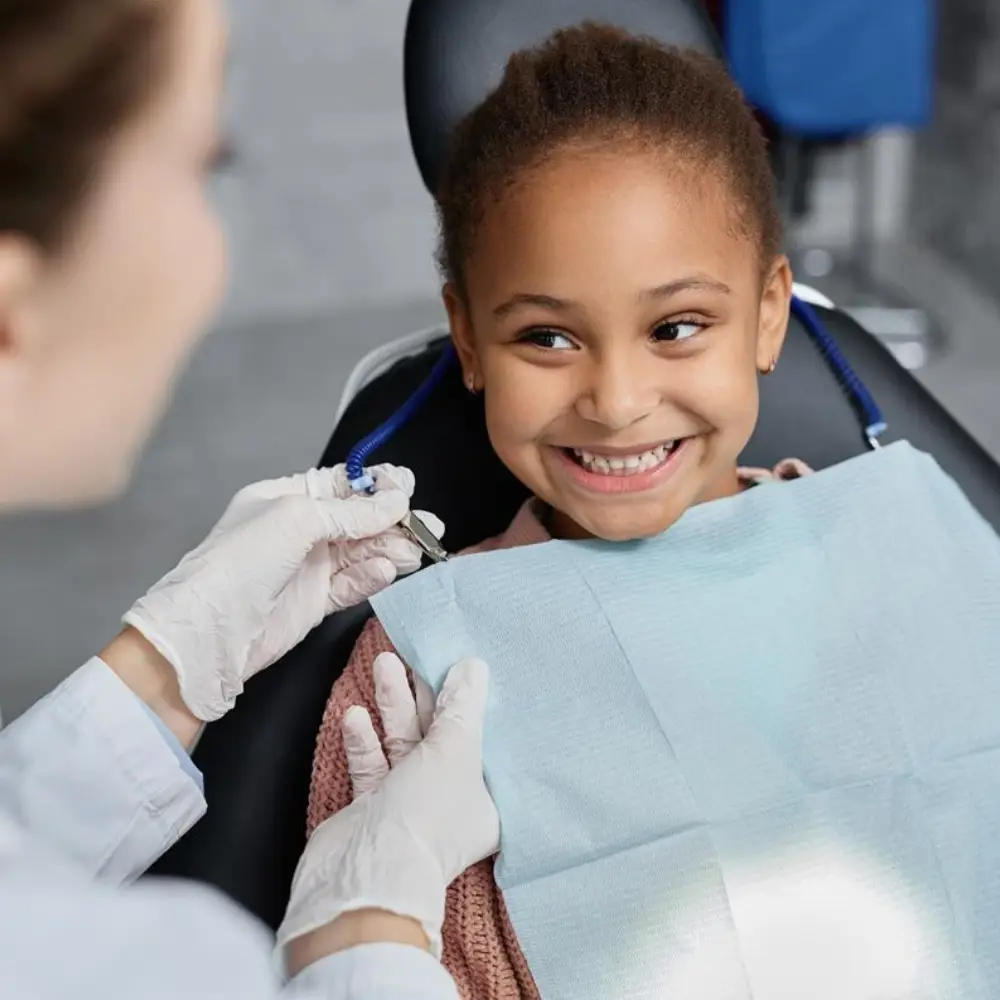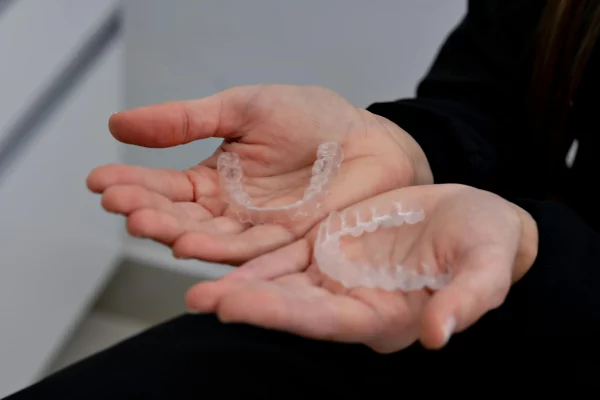Invisalign is no longer a purely cosmetic dental solution, but it may serve as a means of speech therapy as well. Teeth or bite misalignment may therefore affect the production of sound, causing lisps, tongue thrust or difficulties in producing some consonants. In such cases, the speech therapists can suggest the orthodontic treatment to overcome the structural hindrances that are causing the speech challenges.
The Invisalign aligners are discrete and removable, which makes the process less invasive to the gradual realignment of teeth and the continued practice of speech exercises. Combined with the regular therapy, Invisalign may assist in making the speech more confident and clear with time.
How Invisalign Aligners Can Support Speech Improvement

Most individuals consider straighter teeth and a nicer smile when they hear the word Invisalign, but that is not all that the treatment has to offer. Invisalign may also be a supportive and surprising solution to people who struggle with speech because of improper positioning of the teeth or jaw. There are a lot of patients who speech therapists have to deal with and the problem is that their pronunciation is disrupted by the physical barriers in their mouths. Invisalign can assist in lowering these obstacles by slightly moving teeth to a more advantageous position to produce a clearer route to sound production. This, coupled with professional speech therapy, is likely to improve articulation and confidence in communication in general.
Speech Issues Related to Tooth Alignment and Bite
Speech is a cooperation of teeth, lips, tongue, and air. This can have an impact on how some sounds are made when the teeth are crowded, too far apart or the bite is wrong (e.g. an overbite or underbite). Specifically the sounds of s and sh demand a very exact coordination of tongue to the front teeth. Even a slight misalignment may cause an obvious lisp or slurred pronunciation.
How Invisalign Improves Tongue Placement and Airflow
Invisalign is the process of slowly moving teeth towards a healthier position with removable clear aligners. When alignment is improved, it can allow more space and equilibrium in the mouth, where there can be a better tongue position and easier flow of air, both essential parts of clear speech. As an example, an overjet or a crossbite can be corrected to allow the tongue to touch the palate appropriately, and this way, it minimizes the slurred or distorted sounds.
Better alignment is also able to reduce the interference of airflow, ensuring that the pronunciation of difficult consonants such as the letter s or th can be more accurate. Such minor adjustments tend to cause a significant improvement in articulation particularly when accompanied by speech therapy.
When Speech Therapists Recommend Orthodontic Support
All patients in speech therapy will not need orthodontic treatment, but when the progress is stagnant, then it is possible that the patient has structural problems. When articulation is impacted by a misaligned bite, crowding, or spacing, the speech-language pathologists (SLPs) may refer the patient to a dental assessment. Invisalign provides a comfortable, non-obtrusive option to conventional braces, and thus it is an attractive option- particularly among teenagers and adults who worry about the appearance of conventional braces. Invisalign has the capability of opening up more success in the speech therapy process by fixing the source of the problem. The best overall treatment should be provided through collaboration of the SLP and dental provider.
Conditions That May Benefit from Invisalign in Speech Therapy
Some of the speech problems are associated with dental alignment disorders and treatment of such underlying causes can result in improved therapeutic outcomes. Lisps, tongue thrust, and trouble with s or th sounds can be the results of bite misalignments, spacing, or overcrowding. Invisalign may assist in re-aligning teeth to give a more balanced mouth environment, which facilitates more clear articulation and better tongue placement. Aligners can also facilitate the ease of air and tongue management in speech in persons with an overbite, underbite, or crossbite. Although it is not a panacea, Invisalign may become an effective instrument when combined with individual speech therapy.
Invisalign for Lisp Correction Due to Malocclusion
Lisp is also a common cause of speech therapy referrals due to the tongue thrusting through the gaps between teeth or through an open bite. Invisalign can seal those gaps and straighten the teeth in a manner that facilitates the natural position of the tongue. This may even help to diminish or even eradicate the lisp, with time, especially when it is combined with guided articulation drills.
Aligners and Their Role in Treating Tongue Thrust
Tongue thrust is a condition that happens when the tongue thrusts against or between the teeth when swallowing or speaking. It may lead to a poor development of the bite and unresolved speech problems. The Invisalign aligners may be used as a physical block that retrains the tongue gently, and at the same time straightens the dental arch.
Bite Adjustments That Enhance Pronunciation Clarity
Misaligned bite may result in minor deformities in the production of some sounds. Individuals will not know that their teeth are affecting their clarity of speech but with the bite fixed the articulation will tend to improve. The bite correction potential of Invisalign is quite useful especially to those patients with speech problems caused by under bites, over bites or cross bites.
Invisalign vs. Braces for Speech Correction Goals

Regarding the speech issues connected with tooth alignment, both Invisalign and normal braces may work, and the correct decision should be made based on the needs and life of the patient. Braces are used more frequently with more complicated alignment conditions and are also used to exert constant pressure to straighten the teeth. They may however interfere with speech temporarily because of their bulkiness and metal parts.
Invisalign aligners, in their turn, are smooth and removable, which makes them more comfortable and less prone to influencing articulation in the course of the treatment. Invisalign can be a better speech-friendly option to patients who prefer discretion and minimal interference with their daily life communication.
How Fixed Braces Compare in Terms of Speech Impact
Speech may be temporarily impaired at first, even after wearing traditional braces, before it improves. The brackets and wires made of metal can hamper the movement of the tongue which is needed to produce sounds. Invisalign, in its turn, is a smoother surface and more comfortable to people who are afraid of how their treatment will impact the communication process.
The Adaptation Period with Removable Aligners
Although Invisalign can produce slightly altered speech during the initial days of using new trays, most patients adapt in less than one week. Unlike braces, the aligners may be taken off during such speaking engagements (in case it is necessary), which is flexible during the adaptation process. It may be particularly useful to teens or adults at school or in a workplace.
Choosing Invisalign for Adult and Teen Speech Challenges
Adults and teenagers prefer Invisalign because of its unnoticeable look, however, its benefits have more to do with its functionality. Invisalign is more than a cosmetic procedure to those who have difficulty with speech patterns due to bite alignment or dental crowding, it is an important component of a multidisciplinary care approach. Patients are more likely to achieve the long-term changes when orthodontic care is used in combination with the specific speech therapy. This is a teamwork method that does not only improve the communication skills but also makes people feel more confident due to the functional and visual change.
Real Stories: When Orthodontics Helped Improve Speech
In the case of most patients, the path to being able to speak more clearly does not only involve exercises or a therapy session; it may involve solving underlying dental or structural problems. Combining speech-language therapy with such orthodontic treatment as Invisalign, the joint effect can result in impressive changes. These are the real life stories of how straightening of teeth can be an effective tool to unleash the voice of a person, be it in terms of reducing lisps, gaining clarity and confidence.
Collaborative Treatment Between Dentists and SLPs
When things are perfect, dentists and speech-language pathologists (SLPs) work hand in hand to make sure that treatment plan is comprehensive. Whereas Invisalign is aimed at the structural correction of the teeth and the jaw, the SLP aims at retraining the speech patterns, the tongue posture, and the articulation habits. This two-pronged intervention deals with the physical and functional sides of speech problems. Together with monitoring the progress, they will be able to make adjustments in time and provide consistent support. This is of particular help to younger patients, whose speech pattern is still in developmental stage- so as to ensure that the gains made are not just temporary but permanent.
Monitoring Results Over Time with Aligners
The improvement of Invisalign is observed during the regular dental visit. The speech therapist also has the chance to see the improvements in speech and create the complete picture of the treatment efficiency. In case of failure to achieve speech objectives, then aligner plans can be modified accordingly to achieve further improvement of tongue position or bite mechanics.
Frequently Asked Questions (FAQs)
1. Can Invisalign help with lisps or speech delays?
Yes, Invisalign can support improvements in lisps or mild speech delays, especially when these issues are linked to dental alignment problems. Conditions like gaps between teeth, open bites, or improper tongue posture can interfere with clear articulation. Invisalign helps by gradually correcting these structural concerns, potentially making speech clearer over time. However, aligners alone aren’t a cure-all. Lasting improvement usually comes from combining orthodontic treatment with consistent speech therapy. An accurate diagnosis from both a dentist and a speech-language pathologist is essential to identify the true cause and create an effective plan.
2. Do dentists and speech therapists work together on this?
Yes, many cases benefit from a collaborative, team-based approach. Dentists or orthodontists handle the structural aspects of a speech issue like correcting bite problems or tooth alignment while speech-language pathologists (SLPs) focus on function, articulation, and retraining speech habits. In some clinics, these professionals coordinate directly to create personalized, integrated treatment plans. Even when they work in separate practices, ongoing communication between providers can greatly enhance outcomes. This ensures that progress in one area supports improvement in the other, leading to more lasting and effective results.
3. Will Invisalign worsen speech before improving it?
Some people experience a brief adjustment period when they first start using Invisalign. It’s common to notice a slight lisp or minor changes in speech clarity, especially during the first few days of wearing a new set of aligners. This temporary change happens as your tongue and mouth get used to the trays. Fortunately, Invisalign’s smooth and custom-fit design makes this phase shorter and more manageable compared to traditional braces. Most patients adapt quickly, and any initial speech disruptions typically fade as comfort and muscle memory improve.
4. How quickly can speech improvements be noticed?
The timeline for speech improvement with Invisalign varies depending on the specific speech issue and the degree of misalignment. Some individuals, particularly those with mild tongue thrust or frontal lisps, may begin to notice subtle changes within a few weeks. In more complex cases, it may take several months of consistent aligner wear and speech therapy to achieve significant results. Regular check-ins with both the dentist and the speech-language pathologist are essential to track progress and make any necessary adjustments. This ongoing collaboration helps ensure that improvements are meaningful and lasting.
5. Is Invisalign covered by insurance for speech-related issues?
Insurance coverage for Invisalign depends on your plan and the reason for treatment. Most dental insurance policies include benefits for orthodontic care, which may extend to Invisalign. However, coverage specifically tied to speech improvement is less common unless there’s a documented medical or dental condition contributing to the issue. In such cases, partial reimbursement might be possible. It’s important to speak with both your orthodontist and insurance provider to clarify what’s covered and whether any documentation is needed to support your claim.
If you or your child is in speech therapy and struggling with bite or alignment issues, consider asking your speech therapist or dentist about Invisalign. A thorough evaluation can reveal whether aligners could play a helpful role in your journey toward clearer speech. Collaborative care between speech therapists and orthodontic specialists can unlock lasting benefits, not just for your smile, but also for your voice.
At Graham Park Dental, we’re happy to assess your case and guide you through your Invisalign options. Schedule a consultation today to discover how we can support both your dental and communication goals.


